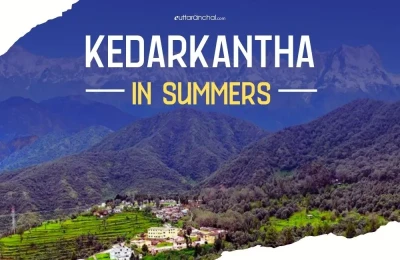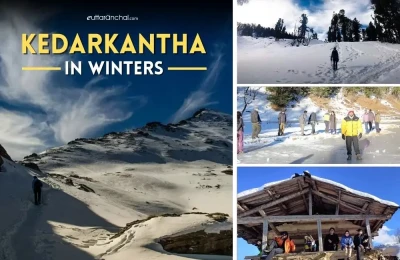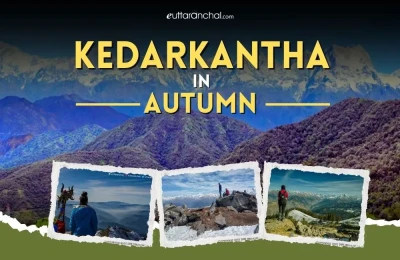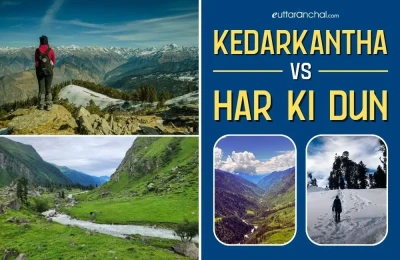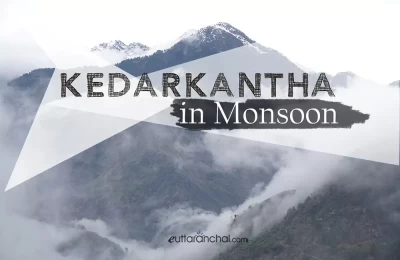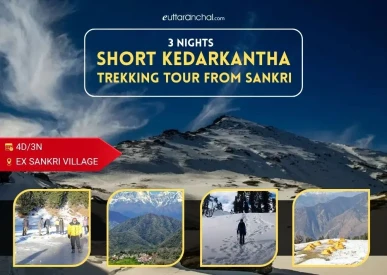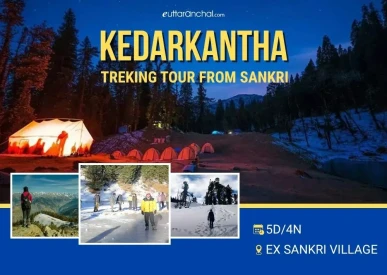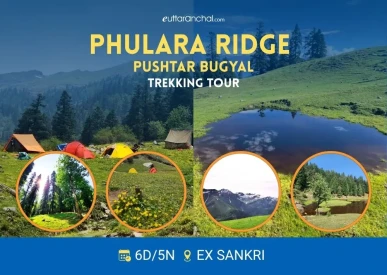Sunrise from the Summit of Kedarkantha Peak
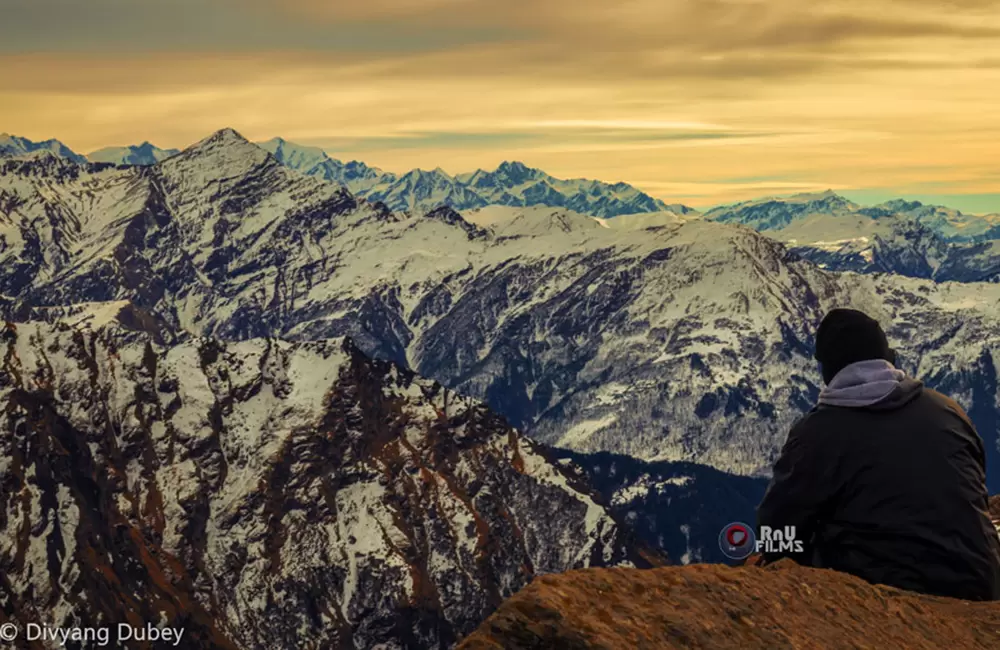
Kedarkantha, a prominent peak in the Govind Wildlife Sanctuary of Uttarakhand, India, stands at an elevation of 3,810 meters (12,500 feet). Renowned for its accessible winter trek, the summit offers one of the most breathtaking sunrise views in the Garhwal Himalayas.
As the first light pierces the horizon, the snow-clad landscape transforms into a canvas of gold, pink, and crimson, illuminating peaks like Swargarohini, Bandarpoonch, and Black Peak. This article explores the trek, the sunrise experience, practical considerations, and its cultural significance.
Witnessing the sunrise from the Kedarkantha summit is truly one of the Himalayas’ most magical experiences.
The Kedarkantha Sunrise Spectacle
Rising at around 3 AM, trekkers begin the final ascent toward Kedarkantha’s summit, braving crisp winter air and snowy trails under starlit skies. This early start ensures arrival at the peak just as the first light begins to illuminate the horizon—a moment worth every ounce of effort and planning.
Many people who have experienced the sunrise say that it's magical. There is no other view beautiful as compared to sunrise from the Kedarkantha Peak. The mesmerizing glow will leave you speechless.
You get to experience the true nature-like quietness of early morning, with thin air on the mountain. However, these qualities will make feel like you are connected to the place, connect to nature.
Preparing for Kedarkantha’s Summit Sunrise
Timing: Start summit push around 3 AM to reach the top by sunrise.
Gear: Proper thermal clothing and insulated footwear are essential, as temperatures at the summit can drop as low as -10 degrees.
Photography: The sunrise at Kedarkantha is renowned among photographers for its colors and clarity, so bring a camera or smartphone, and keep batteries warm in pockets.
Best Time to Visit: From December to April, the region is blanketed with snow, offering dramatic sunrise views against pure white backdrops.
Difficulty: Moderate; suitable for beginners with basic fitness. The final 1–2 km to the summit is steep (30–40° incline in snow).
Essentials: Crampons/micro-spikes, trekking poles, layered clothing (base, mid, shell), UV-protective sunglasses.
Nutrition: High-calorie snacks (nuts, energy bars); hydration salts to counter altitude effects.
Kedarkantha Sunrise Visual Sequence
- Pre-Dawn (5:30–6:00 AM): The sky shifts from inky black to deep indigo. Headlamps illuminate the crunching snow as the temperature hovers between –5°C and –10°C.
- First Light (6:15 AM): A faint glow appears on the eastern horizon. Swargarohini (6,252 m), believed to be the stairway to heaven in Hindu mythology, catches the initial alpenglow.
- Golden Hour (6:30–6:45 AM): The sun crests behind the Yamunotri range, bathing the Greater Himalayas in warm hues. Shadows stretch dramatically across undulating ridges.
- Full Sunrise (6:45–7:00 AM): Peaks turn molten gold. The Gangotri range, including Black Peak (6,387 m), reflects sunlight onto the Kedarkantha meadow below.
Sunrise Photographic Tips
- Gear: Wide-angle lens (16–35 mm), tripod, ND filters for long exposures.
- Composition: Frame Swargarohini centrally; include foreground elements like prayer flags or frozen shrubs for depth.
- Settings: ISO 100–200, f/8–f/11, bracket exposures to capture high dynamic range.
Kedarkantha Sunrise: Frequently Asked Questions (FAQs)
Q. What is the best time to see sunrise from Kedarkantha Peak?
A. Best Time for witnessing Sunrise is from December to April (Winter & Early Spring). Avoid monsoon (July–September) due to cloud cover and slippery trails.
Q. What time should I start the summit push for Kedarkantha sunrise?
A. Please check the details below.
Start Time: 2:00 AM to 3:30 AM from Kedarkantha Base Camp (3,350m)
Winter: Start at 2:00 AM – Sunrise ~6:30–7:00 AM
Summer: Start at 3:30 AM – Sunrise ~5:30 AM
Tip: Takes 2.5–3.5 hours to cover 3 km (460m ascent). Reach summit 30 mins early for pre-dawn glow.
Q. Is the Kedarkantha sunrise trek suitable for beginners?
A. Yes the trek is beginners friendly – Moderate difficulty, No prior trekking experience needed. Final 1 km is steep (30–40° in snow) – microspikes & trekking poles mandatory in winter.
Note: Not recommended for children under 12 or those with severe heart/respiratory conditions.
Q. How cold is it at Kedarkantha summit during sunrise?
A. Temperature: –8°C to –12°C (December–February) with wind chill up to –15°C . Feels-like: –20°C in windy conditions
Q. Can I do Kedarkantha sunrise trek solo?
A. Solo Trek is not recommended in winter and Forest permit requires guide. Night ascent for sunrise can be risky without local knowledge. You can check our Kedarkantha Packages.
Many trekkers describe Kedarkantha sunrise as an emotional high point of their adventure—one that remains etched in memory long after the snow has melted and the valleys have thawed. Even beginner trekkers, drawn by the trek’s accessibility and moderate challenge, find that the hours spent in darkness are redeemed with each golden ray at the top.
Experiencing sunrise from Kedarkantha’s summit is a must for anyone chasing unforgettable Himalayan moments. Planning, preparation, and perseverance pay off in breathtaking memories above the clouds.
